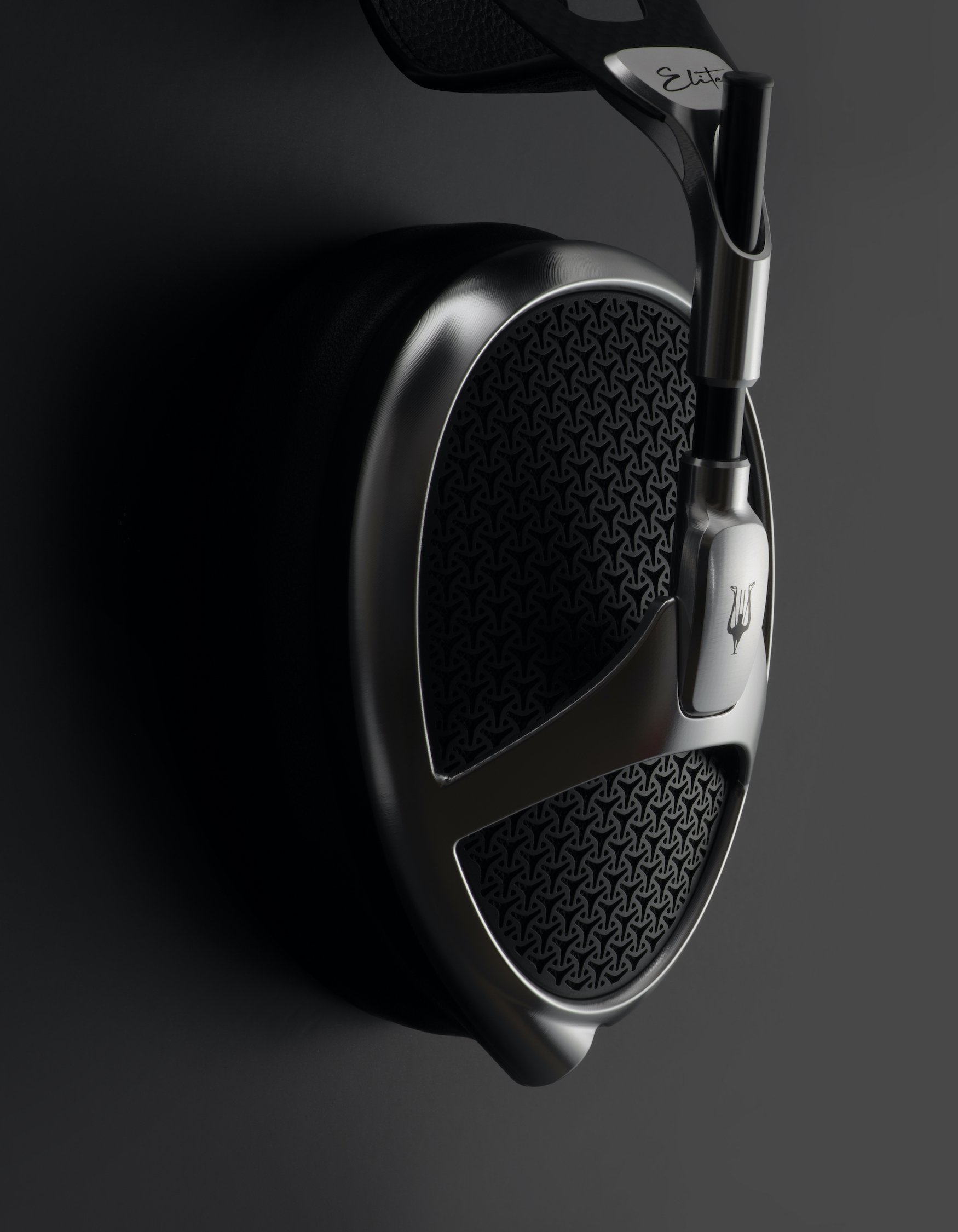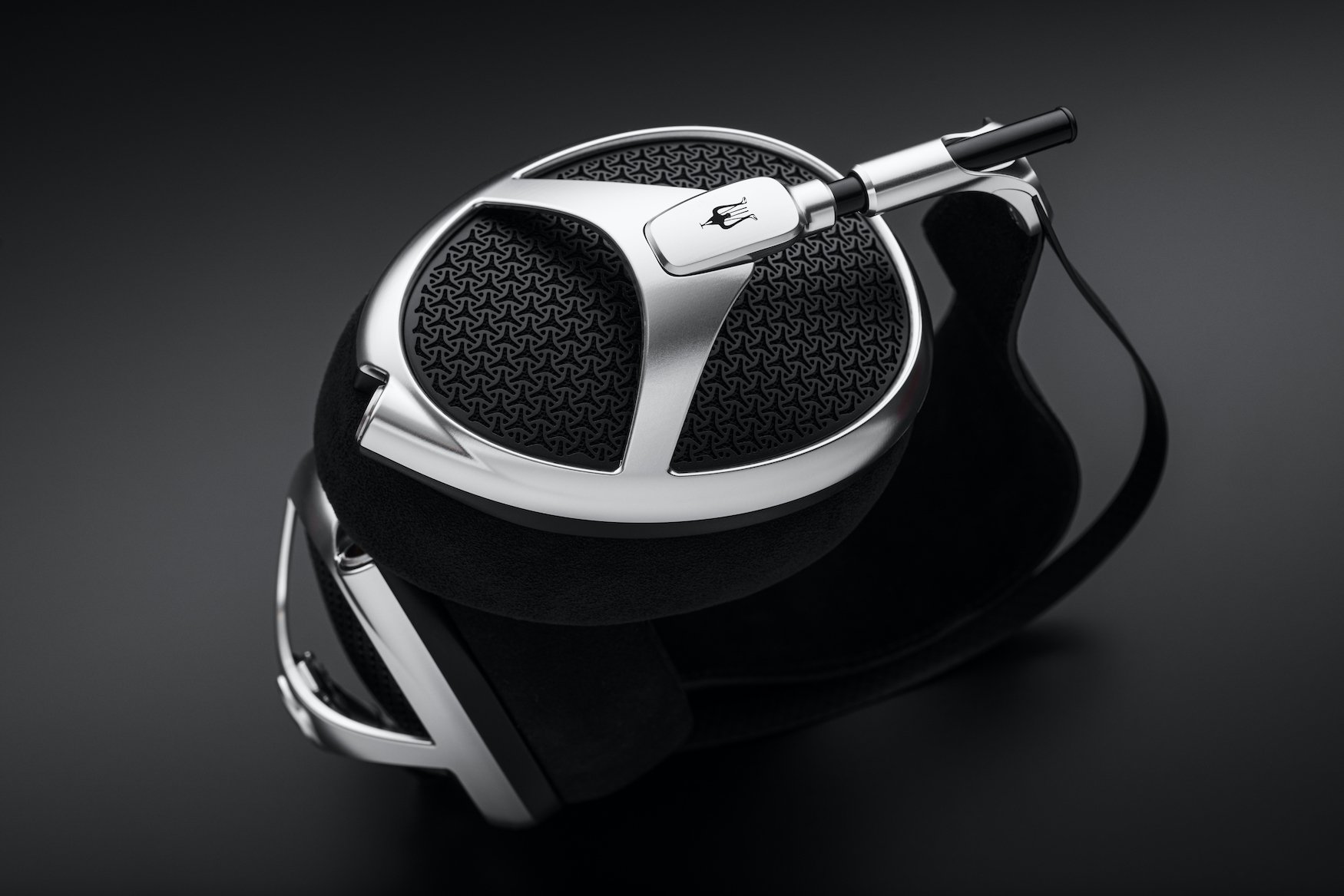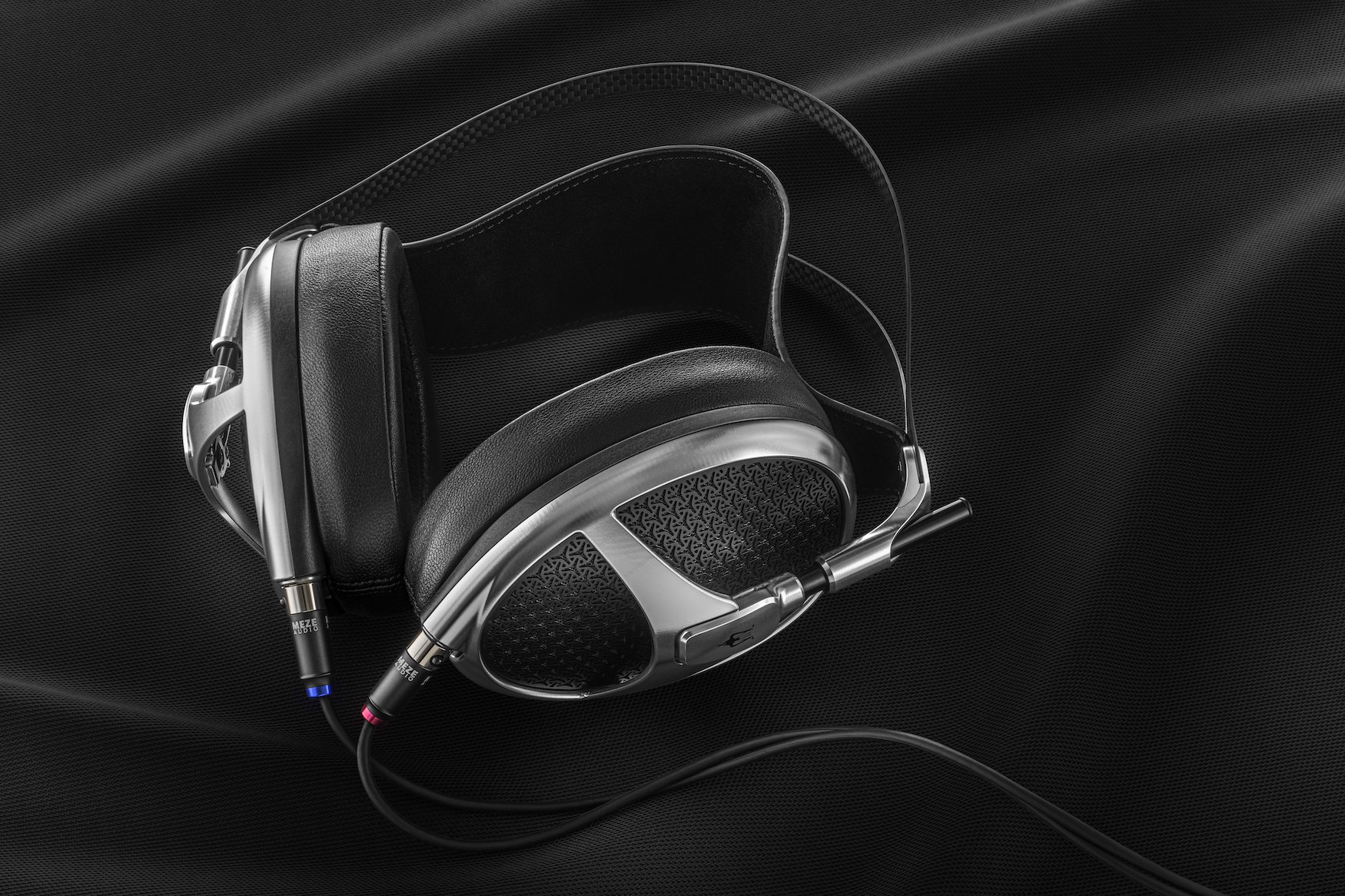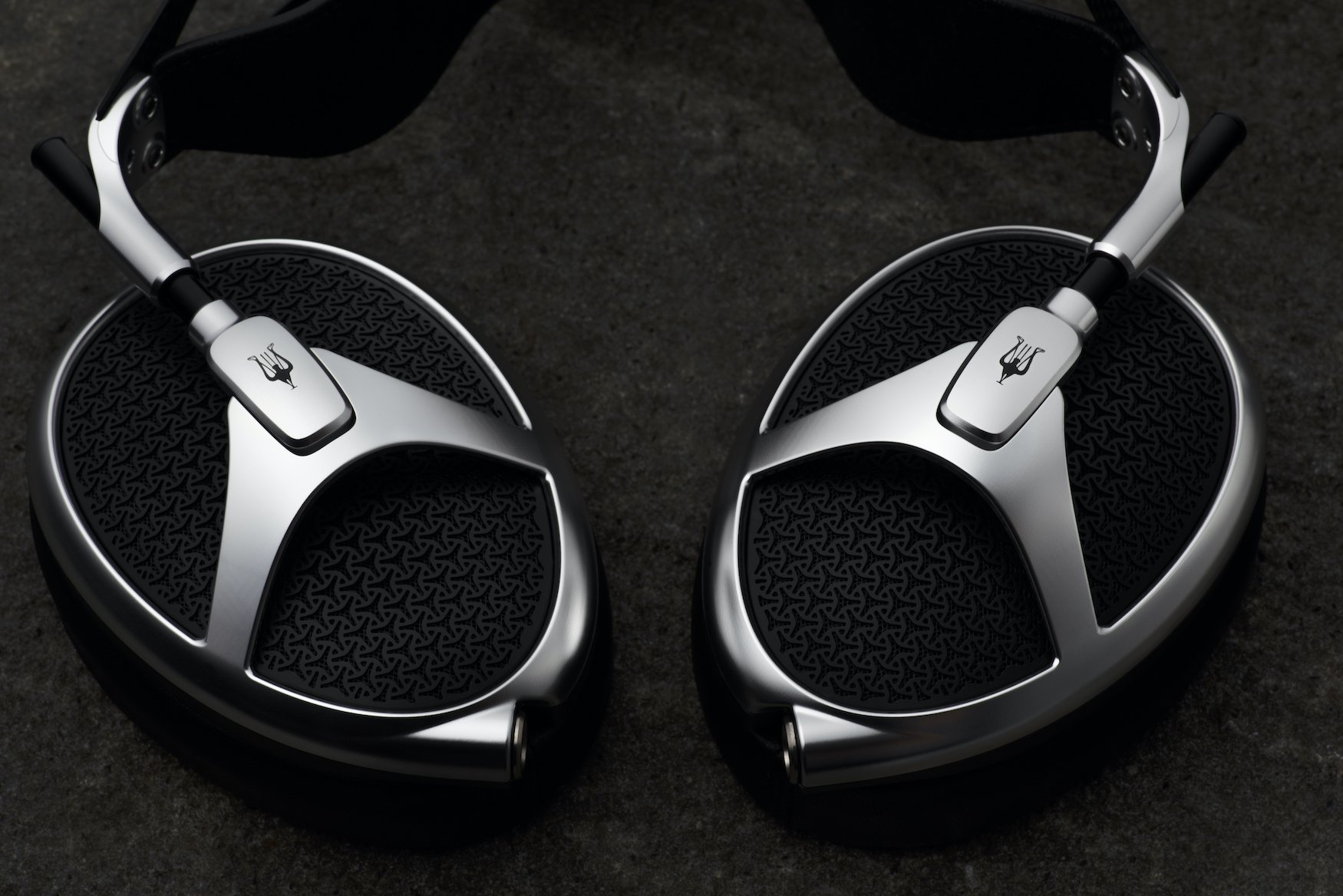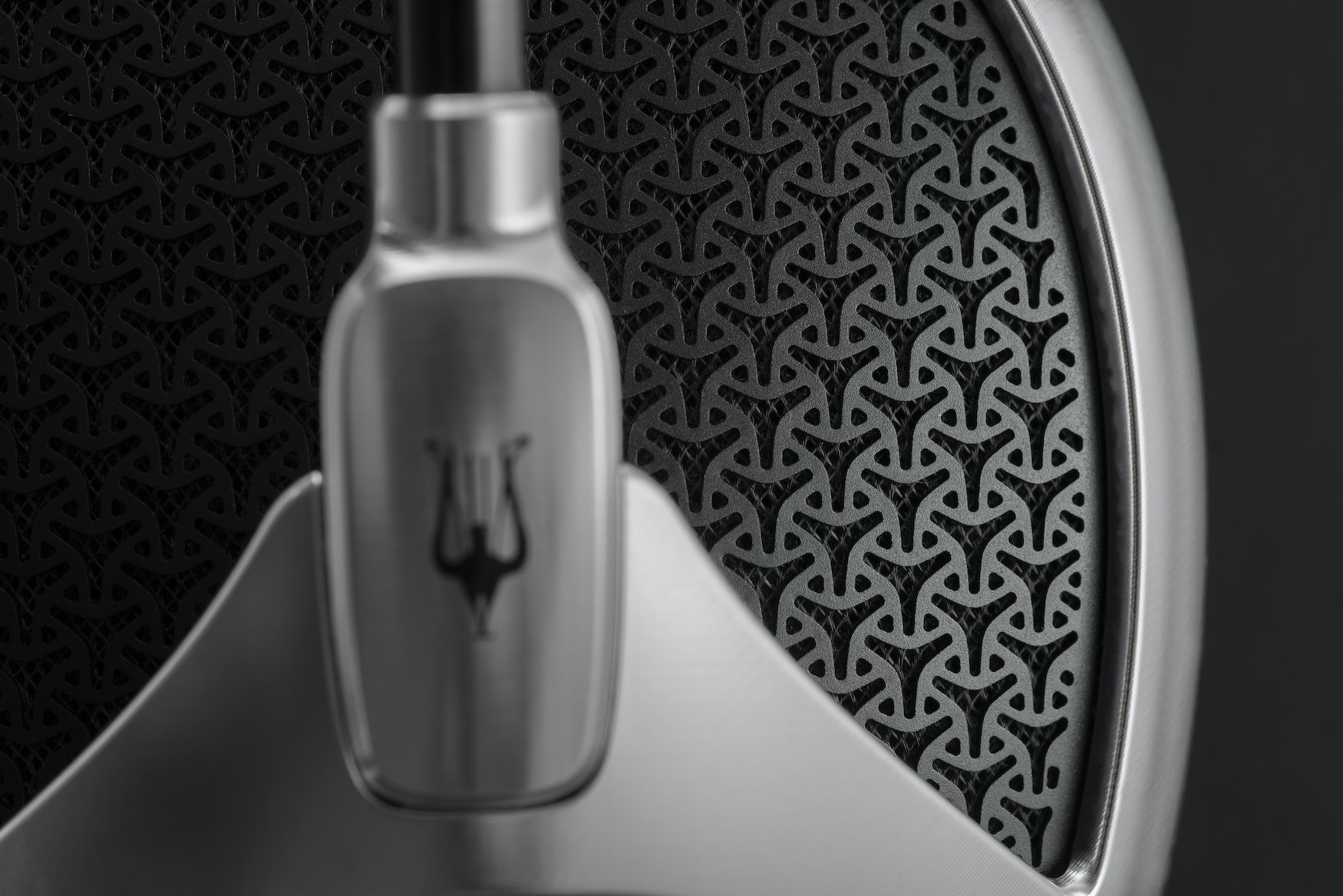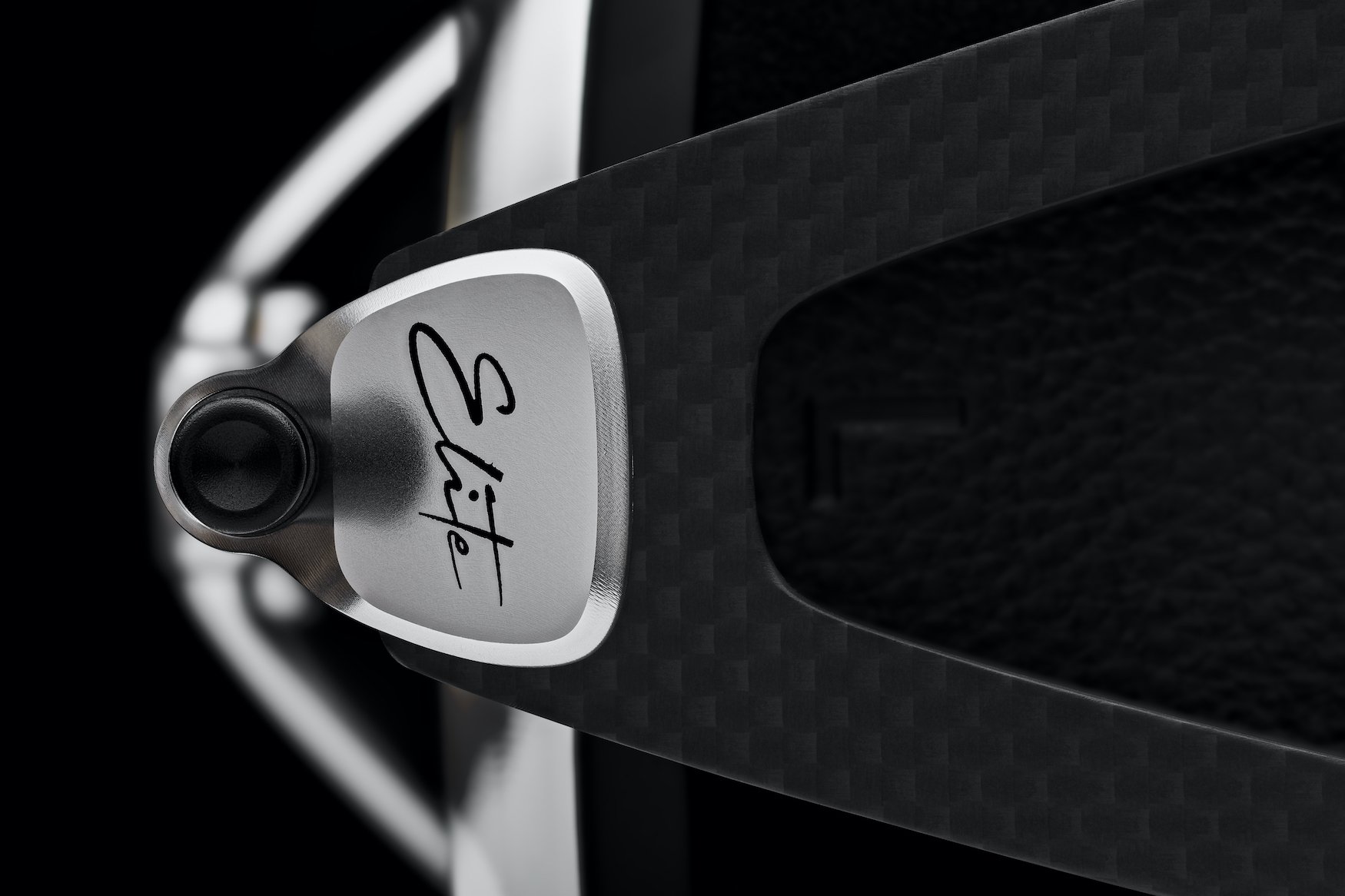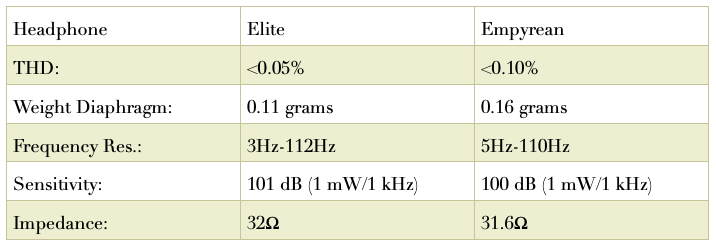THE MEZE EMPYREAN ELITE - REVIEW
Meze’s New Top-of-the-Line (TOTL) Star!
I count myself fortunate that I have experienced a number of incredible headphones over the past couple of years that have turned my listening world upside down. They have done this by rendering a level of see-through transparency, resolution, and detail—information from the various media (streams, CDs, etc.)—combined with a soul-engaging warmth and richness of timbre, tone and texture, that I did not think possible. An epiphany! And three-dimensionality?! Incredible.
Though for nearly the entirety of my life, loudspeakers were my go to and all I truly knew. And, yes, there were some incredible loudspeakers in the mix—Avantgarde Acoustics, Magneplanar, Living Voice, Verity, Avalon, Infinity, Quads ESLs, B&W, etc, etc.
The loudspeakers all had their own individual voice, their way of being in a room (coupling or not coupling), and the types of music—jazz, blues, rock, grunge, classical, etc.—that they considered their BFFs. They were, however, always at the mercy of the room in which they stood, and how they were placed respective to each other. A great room, great placement—a rarity—led to good to great sound. The standard, inevitably, was more often than not a horrible to adequate to decent to good room, and sound which paralleled each iteration.
When I first came in contact with the Meze Empyrean, I thought it a modern work of art that belonged, easily, in a modern art museum. And I encouraged Antonio Meze to make it so. How would that be for a marketing pitch? “Yes, it’s also in the New York MOMA, the TATE, the CENTRE POMPIDOU.” The design aesthetic of the Meze Empyrean Elite, though it retains the self-same ‘chassis’ as the Empyrean, is of a different aesthetic. Its aesthetic is futuristic, its patinas stark, clean, sci-fi oriented, and quite beautiful. Yes, they are easily discernible in this way from each other, and while some may prefer one aesthetic over the other, I intend to have them both, as I find them both truly gorgeous, but that’s only the beginning!
Unwilling to send the Empyrean back to Meze after its stellar review, its Diamond Award (our highest award classification), and its designation as the Best of the Year Product for 2020, I bought it, as a much needed reference product. I also have the Meze upgrade copper wires in 6.3mm and XLR versions, so as to compare the siblings directly and with the best possible ancillary wires. The question of the moment, of course, is how do they differ in sound?
REFRAIN: Unlike most reviews, this review will be non-sequential, as it will start with how the equipment actually sounds and not the process of physically “undressing” it and/or laying out its various accoutrement, specifications, etc. Think of this review then, as a non-linear movie—Memento, Kill Bill, Pulp Fiction, etc—that, likewise, starts at the end and winds its way to the beginning.
The Sound
The major functional design difference between the Meze Empyrean and the new Meze Empyrean Elite is the new Parus® Rinaro Isodynamic Hybrid Array Driver, which is, approximately, thirty percent (30%) lighter than the driver employed in the Empyrean. The driver is, by the way, the equivalent of a speaker or series of speakers, collectively, in a loudspeaker. It is what allows the Meze headphone to make music.
Given that this was the main and truly only difference, as sensitivity, the surface area, magnetic field, Total Harmonic Distortion (THD) were all identical, save, again, the new Parus® driver. In truth, I was a bit skeptical of the magnitude of change to expect. Though keeping to the analogy of a loudspeaker and switching that speaker’s driver for one that was both lighter and faster would, no doubt, make a difference in the resultant sound, would this amount to a significant qualitative difference?
I needn’t have been worried at all! There were immediate differences between the Meze Empyrean and the Meze Empyrean Elite that were quite profound! The differences ranged from the rendering of the tip top of the frequency spectrum to the bass at the stygian depths of the Holy-Bass-Head-Grail to the soundstage to transparency and resolution! And the resultant clarity, clarity, clarity was stunning in that it would evoke, from time to time, shades of a quite different headphone technology—electrostatics—and this was completely unexpected and stunning! “This is not the Empyrean,” I would comment to self and sometimes aloud.
The Meze Empyrean Elite appeared to pierce the electrostatic sphere time and time again, as its transparency would lay bare microdynamic and spatial cues, air and ambiance, while finely parsing instrumental timbres and textures, together with a natural tonality that I had not believed possible of planar headphones. And then there was its layering and transient speed, the entirety of which separated it clearly from its sibling, and its sibling from its former flagship status, and it itself, to a larger degree, from all other planar headphones.
It all reminded me of the nearly past two years and the quite glorious time that I had spent in the distant and, for many, unexplored world of electrostatic headphones. Often when one visits a new, beautiful, gracious and giving land, one does not readily wish to return from it. However, I’m glad that I have, as there are new and exciting things happening in both planar headphones and dynamics headphones as well (see ZMF Atticus review).
What is strange, indeed, is how the Empyrean, our Best of the Year component for 2020, when placed in direct comparison to the Empyrean Elite now sounds rather dark, a tad bit closed in, of limited soundstage, and truncated at either frequency boundary. Though those who have not been exposed to the Empyrean Elite may well think of the Empyrean as we did—the Best of the Year for 2020. Things change.
The Meze Empyrean’s volumetric cube—its soundstage—is of immense depth, width, and height(!). Holographic, in sum, with exquisite layering and positioning and air and space. In truth, it seems easily able to encompass the Empyrean’s soundstage well within its own. And this as the result of a 30% reduction in the weight of the driver?! Incredible!
The Meze Empyrean Elite was paired, given its pedigree, with a number of extremely capable components. The Enleum AMP-23R (review coming), the DENAFRIPS Pontus II, the Mola Mola Tambaqui, LTA Z10e, and the PS Audio Perfect Wave SACD Transport and the PS Audio Direct Stream DAC (review coming). Additionally, the same music was used to further differentiate between the Empyreans Elite and the Empyreans and the Rosson Audio RAD-0, which won our Golden KeyNote Award for 2020 and was one of several Best Products of the Year for 2020.
Bass
“Sacrificial Dance—The Chosen One” (Stravinsky: Le sacre du printemps (The Rite of Spring), Sony Classical) cues and it is potent, powerful, and forbidding. The transients move at tachyon speed—greater than light speed—relative to the Empyrean. The stage is massive with musicians spread across its breadth and into its depth as punctuated by the resounding strikes of the assembled tympani. Whereas the Empyrean could, indeed, reach the Holy-Bass-Head-Grail, the Elite does so with a-matter-of-fact ease that even surpasses the Rosson Audio RAD-0 and with greater parsing of instrumental timbre across the entire frequency spectrum. If, as I stated, the “Meze Empyrean rumbled powerfully, with great clarity, extension, and detail,” the Meze Empyrean Elite overshadows its efforts, entirely. Does a 30% reduction in the mass of the diaphragm make this so? Yes, apparently so.
Midrange
Andy Bey’s “Lush Life” (American Song, Savoy) cues and there is an anticipation that I would not have expected knowing this track so well. But not so well with the Elite. It begins and the clarity and the tautness of the plucked bass moves far beyond simulacrum. Andy’s voice is rich, resonant, full, and yet there is never overhang or bloat or a lack of articulation. The stage is wide, deep, the positioning solid, the layering and separation superb. All sit upon a black-quiet background that swallows noise whole. Cymbals and other percussion bear not the slightest hint of glare or glassiness or the “Scchhhccchsss” of poor to non-existent resolution. The resolution via the Elite is exceptional, natural, well articulated. I did not play VOCES8’s “Agnus Dei” (Enchanted Isle, Decca Music Group) in the Empyrean or the RAD-0 reviews, but I have become very familiar with it and have grown quite enamored of it. “Agnus Dei” now cues. A lone soprano’s voice reaches high for but a moment. She is joined by the seven in a glorious, harmonious and ethereal reading of Samuel Barber’s 1967 choral composition “Agnus Dei” (Lamb of God). Via the Elite this composition is laid bare in all of its captivating beauty, as is the venue which encompasses it. In both instances the Rosson Audio RAD-0 has a beguiling warmth and weight and speed, but it does not have the transparency, nor does it convey the spaciousness of venue, nor the resolution, nor the speed of the Meze Empyrean Elite.
Treble+
Jordi Savall’s “Troisième Leçon de Ténèbres à 2 voix” (François Couperin) (Tous les Matins du Monde, Aliavox) cues, and whereas the voices of Montserrat Figueras and Maria-Christina Kiehr dueled and soared with the Empyrean, they lift off now and soar above the stars as their duel continues with the Empyrean Elite. The hall itself is now more present than it has ever been, and the soundstage, the envelope of the performance, has taken on greater dimension, air, and space as I listen through the Elite. The Veress: String Trio’s I. Andante & II. Allegro molto (Veress: String Trio & Bartók: Piano Quintet, Alpha) is immediately energetic and a good deal more transparent than with the Empyrean, as the players rap (with knuckles), drum, pluck, and, of course, bow their instruments. Timbre too is a step above with the Meze Empyrean Elite as are spatial cues, the solidity of positioning, layering, and overall clarity. There is much more air present now. The Rosson Audio RAD-0 can, indeed, scale the treble heights and it can beautifully resolve both timbre and tone, but again it cannot keep pace, nor does it have the transparency, nor the resolution, nor does it free the tiny, buried details that the Meze Empyrean Elite so easily and readily frees.
The Wrappings and Accessories
The Meze Empyrean Elite is housed in an outer white ‘gift box’ that bears the “intricate, geometrical pattern” of the Empyrean Elite’s and the Empyrean’s meticulously designed and CNC’d sculpted grill. Within the gift box is a white-silver, high-strength, aluminum case, that is printed with the MEZE AUDIO logo, the Empyrean Elite, and RINARO and designating information of it as the developer of the Isodynamic driver. The case is clean, bright, stylish and professional.
Within the case and seated in the cut-out of a foam insert are the Empyrean Elite, two sets of ear pads—one hybrid leather set, one Alcantra, and a 1.2 meter OFC cable with 4-pin, mini-XLR plugs which terminate with a 3.5mm jack connector. Though given its pedigree, one imagines a 6.3mm jack connector included as well.
Cable termination options for the Elite (all have 4-pin, mini-XLR plugs at the headphones) are:
6.3mm jack connector/ 2.5m meter cable ($349)
Balanced 4-pin-XLR/ 2.5m meter cable ($349)
Balanced 4.4mm/ 1.3 meter cable ($269)
Balanced 2.5mm/ 1.3 meter cable ($249)
Note: I would highly recommend the Copper PCUHD Upgrade Cables, as they make a rather incredible difference in fidelity!
Design—Look, Feel, and Technology
Like its sibling—the Meze Empyrean—the new Elite is also modern art with more of a space age feel and a color palette to match. Though it is nonetheless stunning and quite elegant.
And like its sibling, its outward, jet black grills are milled from a solid block of high-precision aluminum, which Meze reports takes approximately twenty (20) hours of time to complete.
Technology and Specification
“"With ELITE, we've created something that transcends all barriers of headphone design and engineering and moves to a new, artistic, graceful level. Following in the footsteps of a successful partnership, together with Rinaro Isodynamics we managed to exceed our expectations once again and create something for the ages. It’s not mass production; it’s the craftsmanship that sparks the magic and wonder in ELITE, what makes it exciting, and these are values that we choose over any shortcuts.”
—Antonio Meze
The technology for the uninitiated is somewhat complicated and for the sake of both brevity and readability I will not repeat it here, but provide a link for further information to the Meze Empyrean Elite’s page. The Details
Suffice to say, as I have mentioned above, that the only significant difference is the new Rinaro Parus Diaphragm which at 0.11 grams is thirty percent (30%) lighter than the Empyrean’s Rinaro Diaphragm (0.16 grams). And in this one difference alone, there is, literally, a world of difference. Below are some of the other differences between the Empyrean and the Elite:
relative SPECIFICATIONS
The Meze Empyrean Elite’s low impedance (32Ω -Ohms) and high sensitivity (101dB) make these headphones very easy to drive though you will want to pair them with the very best equipment to tease out their prodigious talent.
Conclusion
The Meze Empyrean Elite represents something new. New in that it appears to sit at the crossroads of a hybridized sound and technological profile—planar magnetic as wed to electrostatic. Perhaps the loss of 30% of the driver’s mass was sufficient to couple it to, at the very least, the boundaries of the electrostatic universe. I say this, again, after having been deeply immersed the past two years within the electrostatic universe via a number of electrostatic headphones and electrostatic headphone amplifiers, that were the best on offer. I have come to know this world quite well.
That said, I am somewhat bewildered. I had become quite the cynic when it came to that which was not electrostatic, but this has now been corrected and on two occasions! Most recently with the Meze Empyrean Elite and prior to that with the dynamic headphone, the ZMF Atticus, which at moments, however brief and fleeting, showed glimpses of the selfsame electrostatic universe.
Well, this is easy. Like its sibling, the Meze Empyrean Elite is very highly recommended and we gladly award it our DIAMOND AWARD for excellence in the superb rendering of music via its incredible, electrostatic-like transparency, resolution, and its extraordinary natural musicality.
THE SYSTEMS
1.
Roon Nucleus+
ENLEUM AMP-23R
MEZE EMPYREAN
ROSSON AUDIO RAD-0
ZMF ATTICUS
AUDIENCE FRONT ROW CABLES
TORUS RM20
2.
Roon Nucleus+
LTA Z10e
MEZE EMPYREAN
ROSSON AUDIO RAD-0
ZMF ATTICUS
AUDIENCE FRONT ROW CABLES
TORUS RM20
The Company
Meze Audio
Iuliu Maniu str., nr. 38,
1st floor, ap. 2,
Baia Mare, 430131, Romania
info@mezeaudio.com
www.mezeaudio.com



